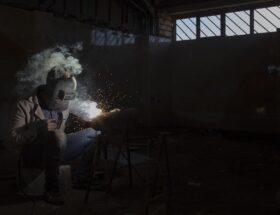Reimagining the Holodeck: Engineers Use ChatGPT and Video Game Assets
The Future of Virtual Reality
Virtual reality has long been a fascination for technologists, scientists, and the general public alike. The idea of immersing oneself in a completely different world, free from the constraints of reality, has captured our imaginations for decades. One popular concept that has intrigued many is the holodeck, a staple of science fiction in shows like Star Trek.
What is a Holodeck?
The holodeck is a fictional room in the Star Trek universe that uses advanced holographic technology to create realistic simulations of any environment. Users can interact with these simulations as if they were real, making it the ultimate in virtual reality experiences. While the holodeck may seem like pure science fiction, recent advancements in technology are bringing us closer to making it a reality.
Engineers Use ChatGPT and Video Game Assets
In a groundbreaking development, engineers have started to use ChatGPT, an advanced language model, in combination with video game assets to reimagine the holodeck. By leveraging the natural language processing capabilities of ChatGPT and the immersive visuals of video game assets, engineers are able to create highly realistic and interactive virtual environments that rival the capabilities of the fictional holodeck.
Using ChatGPT, engineers can easily describe the desired virtual environment in natural language, allowing the AI to generate detailed descriptions of the scene. These descriptions are then used to create a virtual world using video game assets, complete with realistic textures, lighting, and interactive elements. The result is a truly immersive experience that blurs the line between reality and virtual simulation.
Benefits of Using ChatGPT and Video Game Assets
The use of ChatGPT and video game assets in creating virtual environments offers a number of benefits. Firstly, it allows for rapid prototyping and experimentation, as engineers can quickly generate and iterate on different virtual environments without the need for extensive coding or design work. This accelerates the development process and makes it easier to test out new ideas and concepts.
Additionally, the combination of ChatGPT and video game assets results in highly realistic and immersive virtual environments. Users can interact with these environments in a natural and intuitive way, enhancing the overall experience and making it feel more lifelike. This level of realism is crucial for applications such as virtual training simulations, where the goal is to provide a realistic and immersive learning experience.
Furthermore, by leveraging existing video game assets, engineers can save time and resources as they do not need to create everything from scratch. Instead, they can focus on integrating these assets into the virtual environment and customizing them to fit their needs. This streamlines the development process and allows for more efficient creation of virtual environments.
The Future of Virtual Environments
The use of ChatGPT and video game assets in creating virtual environments represents a significant step forward in the field of virtual reality. As technology continues to advance, we can expect to see even more realistic and immersive virtual environments that push the boundaries of what is possible. The integration of artificial intelligence, natural language processing, and interactive visuals is paving the way for a new era of virtual experiences that could revolutionize industries such as entertainment, education, and training.
In , the reimagining of the holodeck using ChatGPT and video game assets showcases the potential of modern technology to create truly immersive virtual environments. By combining the power of AI with the visual fidelity of video games, engineers are able to push the boundaries of what is possible in virtual reality. As we look towards the future, it is clear that the possibilities for virtual environments are endless, and we can expect to see even more exciting developments in this field in the years to come.[2]
Juraj Slafkovsky fait une promesse de soutien au Canadien lors de leur qualification en séries

